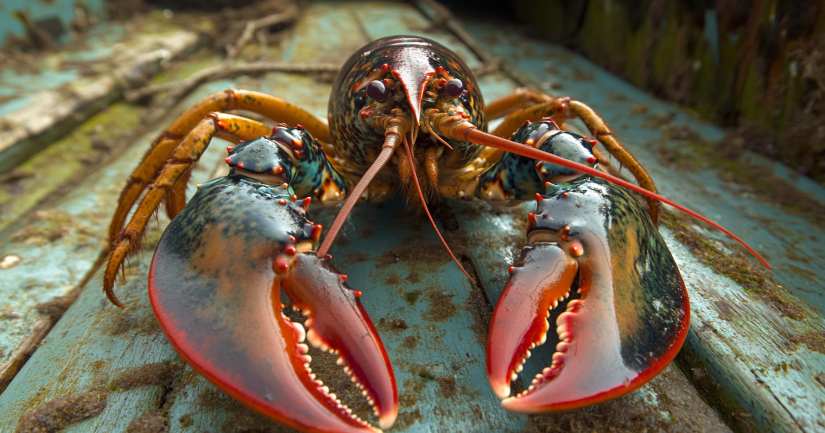
Lobster Quiz Test Your Knowledge of These Ocean Floor Dwellers! Scuttling along the rocky ocean floor, lobsters are some of the most fascinating and ancient crustaceans in the sea. Known for their strong claws, long antennae, and incredible ability to regenerate limbs, lobsters have been around for over 100 million years, surviving in some of the ocean’s toughest environments. But how much do you really know about these armored invertebrates? Take our Lobster Quiz and find out!
Lobsters belong to the decapod family, meaning they have ten legs, including their two powerful claws. They come in a variety of species, from the American lobster, famous for its massive pincers, to the spiny lobster, which lacks large claws but is known for its long, spiny antennae.
Despite their reputation as a luxury seafood delicacy, lobsters are tough survivors, capable of living in deep, cold waters, squeezing into rocky crevices, and even outgrowing their shells multiple times throughout their lives.
Lobsters are just the start! Learn about the power and grace of orcas in our Killer Whale Quiz or dive deeper with the legendary Great White Shark Quiz.
Mind-Blowing Lobster Facts That Might Surprise You
Lobsters Can Live Over 100 Years – Some lobsters have been estimated to be over a century old, making them one of the longest-living marine creatures.
They Continue to Grow Their Entire Lives – Lobsters don’t stop growing like most animals; instead, they molt (shed their exoskeleton) throughout their entire lifespan. The largest lobster ever recorded weighed over 44 pounds (20 kg)!
They Used to Be Considered “Poor Man’s Food” – In the 1700s and 1800s, lobsters were so abundant that they were considered low-class food, often fed to prisoners and servants. Today, they are one of the most expensive seafood delicacies in the world.
Not All Lobsters Are Red – Although most people associate lobsters with a bright red color, they actually turn red only after cooking! In the wild, lobsters can be blue, orange, yellow, calico, or even albino, depending on genetic mutations.
They Can Regrow Lost Claws and Legs – If a lobster loses a claw in a fight, it can regenerate a new one—though it may take several molting cycles to grow back fully.
They Have Teeth in Their Stomach – Inside a lobster’s stomach is a structure called the gastric mill, which is used to grind food, acting like a set of internal teeth.
They Communicate by Peeing on Each Other – Lobsters release chemical signals through their urine to establish dominance, attract mates, and send warnings to other lobsters in their territory.
The Role of Lobsters in Marine Ecosystems
Lobsters are essential to ocean ecosystems, serving as both predators and prey. They feed on small fish, mollusks, and marine detritus, while being a key food source for larger fish, octopuses, and humans. However, overfishing and climate change have started to impact wild lobster populations, leading to concerns about sustainable harvesting.
Are You Ready to Take the Ultimate Lobster Quiz?
If you love marine biology, seafood history, or quirky ocean creatures, this Lobster Quiz is perfect for you! Whether you’re fascinated by their ancient lineage, impressive survival skills, or unique biology, this quiz will challenge your knowledge and reveal amazing facts about these armored crustaceans.
So, are you ready to test your knowledge and dive into the world of lobsters? Take the Lobster Quiz now and see if you’re a true crustacean expert!
Love the ocean? Test your knowledge with the Guess the Sea Animal Quiz, discover your marine match in the What Sea Animal Am I Quiz, or explore more Marine Quizzes for underwater fun!
Lobster – FAQ
Lobsters are marine crustaceans characterized by their long bodies, muscular tails, and large claws. They are primarily found in the North Atlantic Ocean, particularly along the coasts of Canada and the northeastern United States. They inhabit rocky seabeds and are often associated with cold, clean waters.
Lobsters are omnivorous scavengers. Their diet primarily consists of fish, mollusks, and other small marine organisms. They also consume decaying organic matter, which contributes to their role in the ecosystem as recyclers of nutrients. Their feeding habits can vary depending on the availability of food sources in their environment.
Lobster harvesting typically involves the use of traps, also known as lobster pots. These traps are baited and placed on the ocean floor. Fishermen check the traps regularly to collect the lobsters that have entered. The process is regulated to ensure sustainability, with specific seasons and size limits to protect juvenile lobsters and maintain healthy populations.
Lobster is a nutritious seafood option that is low in fat and high in protein. It is also an excellent source of essential vitamins and minerals, including vitamin B12, zinc, and omega-3 fatty acids. These nutrients contribute to heart health, support cognitive function, and promote overall well-being.
Cooking lobster can be done in several ways, including boiling, steaming, and grilling. Boiling is the most common method, ensuring the meat remains tender and juicy. It is crucial not to overcook lobster, as this can lead to a tough texture. Pairing lobster with melted butter or lemon enhances its natural flavors, making it a delightful culinary experience
